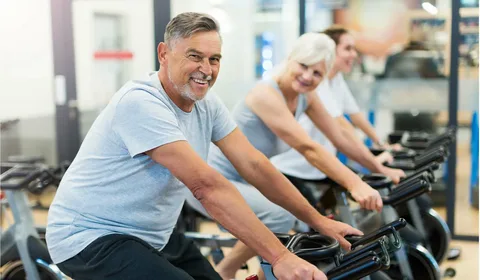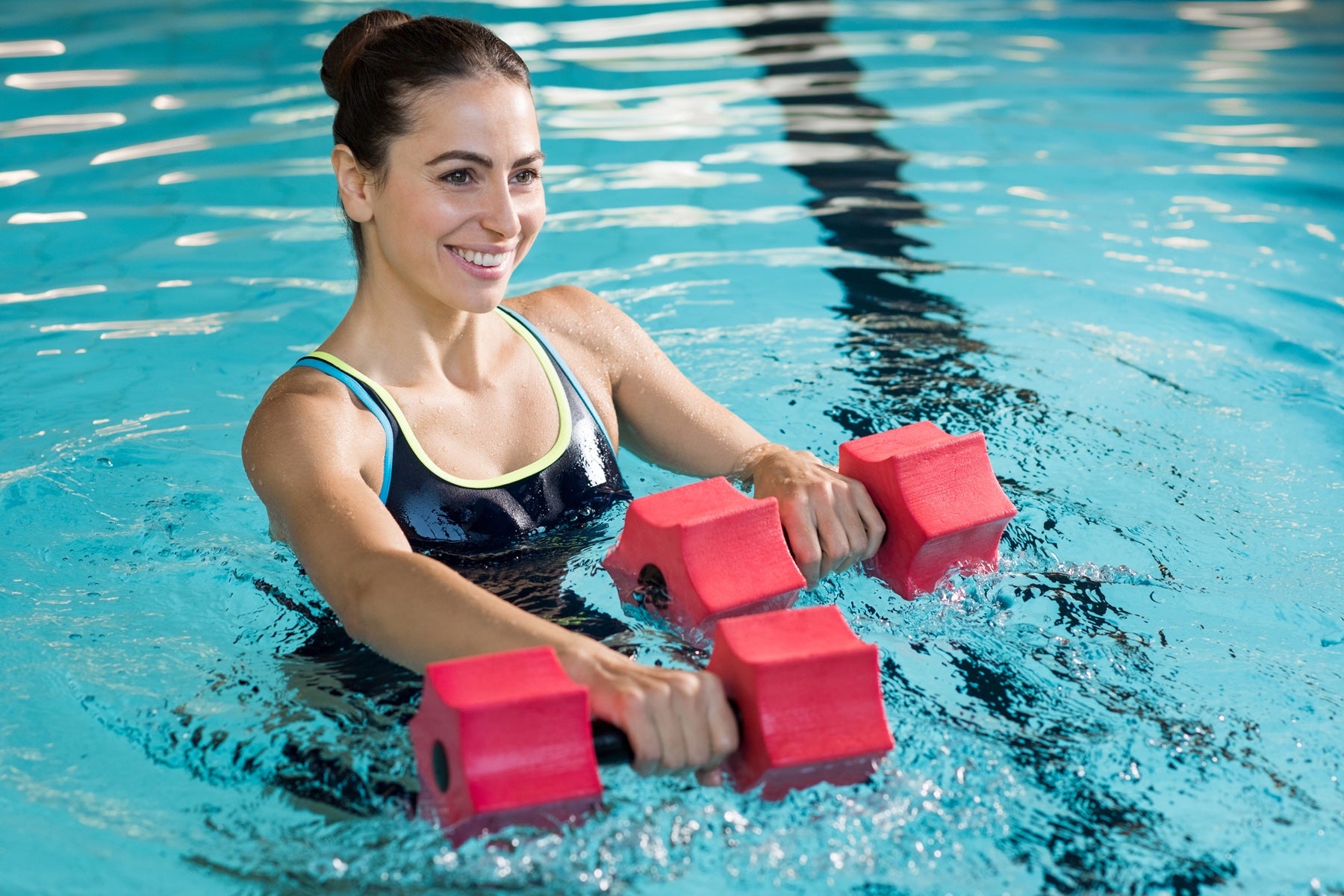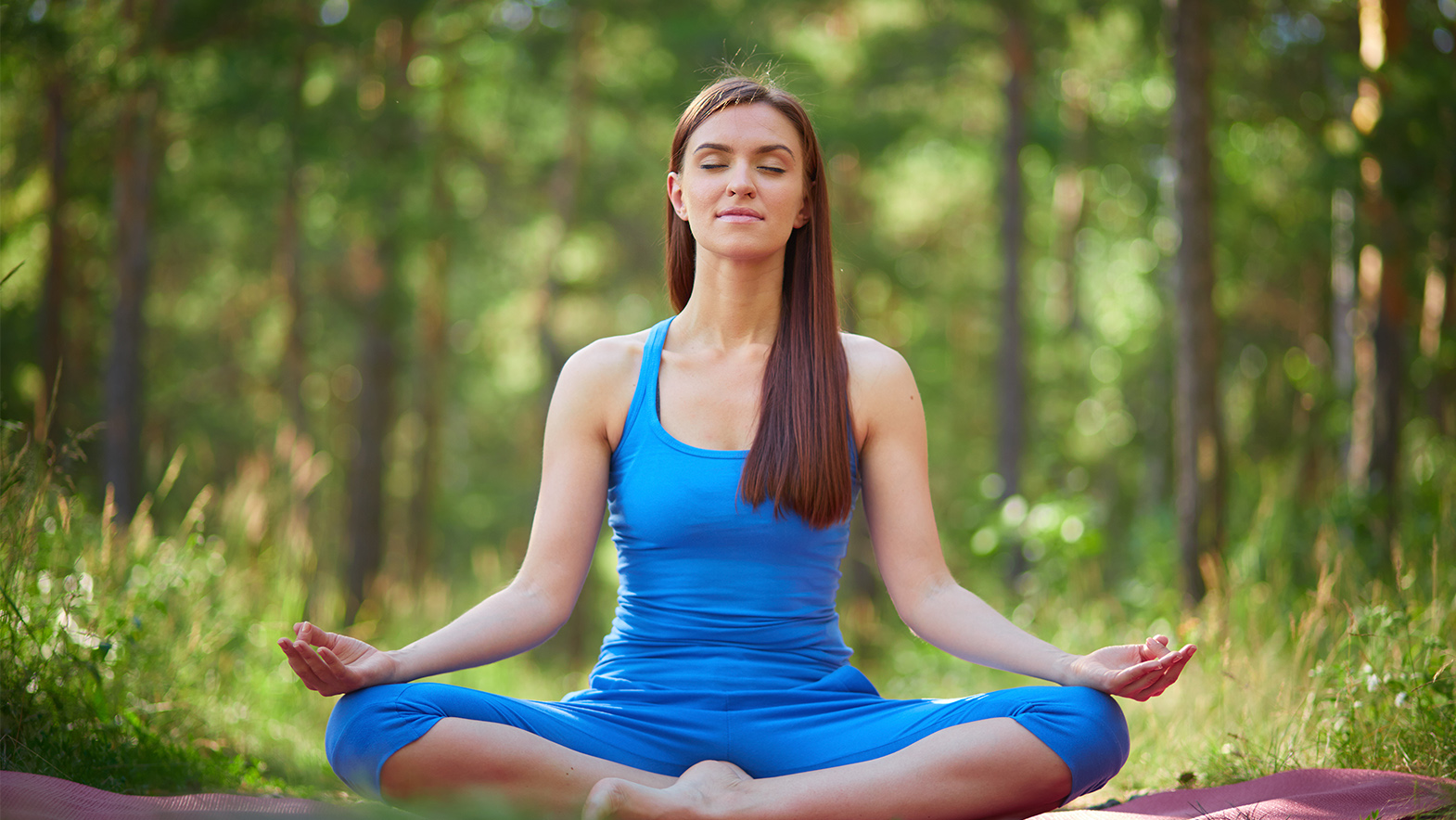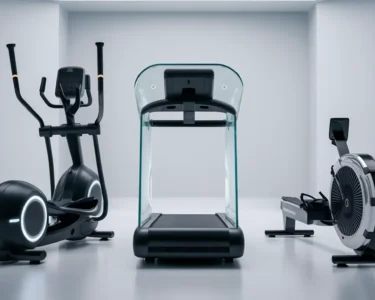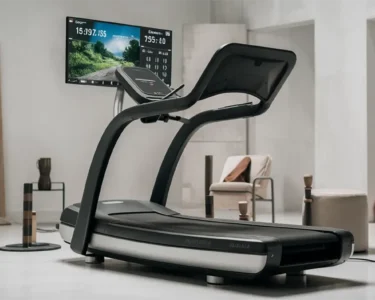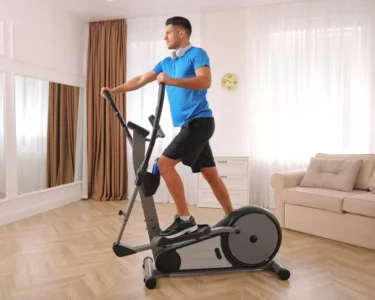When pounding the pavement makes your knees ache, it may seem like exercising is out of the question. But regular exercise can help ease joint pain and increase strength and flexibility.
Low-impact exercises get your heart rate up in a way that doesn’t put too much stress on your joints. Here are some great options to try:
Low-Intensity Exercises For Joint Health
Swimming or water aerobics
Swimming or water aerobics is a great workout for those with joint problems because it doesn’t put much strain on the joints. It’s a full-body exercise that lengthens and strengthens muscles, improves flexibility, and builds cardiovascular endurance. It’s also easy to tailor the intensity of your workout by increasing or decreasing the number of laps you swim. Whether you’re doing freestyle, backstroke or breaststroke, you can use proper technique to minimize injury risk.
Walking is another low-impact exercise that can be done from home or at a fitness center. Walking exercises the lower body and core and increases bone density and muscle strength. It’s also a good choice for those with knee or hip pain, and it can be easier on your joints than running.
While high-impact exercises can still be a part of your overall fitness routine, it’s important to listen to your body and focus on low-impact exercise options if your joints are inflamed or sore. You can even incorporate exercises that work out your joints while strengthening your muscles, like seated exercises such as jumping squats or broad jumps.
Stationary or outdoor cycling
Whether you’re cycling indoors in a group class or on your own in your garage, or outdoors on a bike trail, this aerobic exercise is a great way to strengthen muscles and improve cardiovascular health. But be careful to ride at a moderate intensity so you don’t overwork joints.
Biking gets your legs moving through their full range of motion, which encourages the production of synovial fluid that lubricates joints, says physical therapist Jessica Schwartz of New York City-based PT2Go. It also builds muscles in your legs and core, helping to support your joints.
Walking is another low-impact workout that can improve your cardiovascular fitness, strengthen your muscles and reduce joint stress. But be sure to avoid uneven terrain, which can irritate your knees and hips. Try using poles to walk, as this can help you move more quickly while still working your legs and feet.
If you’re experiencing pain or stiffness in your joints, talk to your doctor before starting a new exercise routine. Maintaining a regular exercise program can help ease joint stiffness and discomfort and even prevent arthritis and other chronic conditions from developing.
Walking or brisk walking
Walking is a simple, effective exercise that strengthens muscles, improves cardiovascular health and increases flexibility. It is also an easy way to get more activity in your daily life.
Brisk walking can relieve knee pain and prevent or delay the need for surgery. It increases the use of leg muscles, which help to support the knee. This allows the joints to carry only their fair share of weight and reduces wear and tear. The exercise can even increase balance and speed.
It is important to warm up before walking. This helps loosen joints and boosts the flow of synovial fluid, which cushions the joints. It is also a good idea to cool down afterwards to prevent stiffness and soreness.
Cycling is another cardiovascular workout that does not put much strain on the knees. However, if you have trouble gripping the handlebars due to arthritis or other hand or finger pain, it may not be an option for you. In that case, elliptical training may be a better alternative. This type of exercise is a good choice for people with arthritis because it provides a great cardio workout without impacting the joints.
Elliptical training
When done correctly, elliptical training can offer a quick cardio workout without overworking the joints. “Elliptical exercises are great for the body because they require a lot of movement but are less impactful than other forms of exercise like running,” says Peloton instructor Matty Maggiacomo. “That means you get the same heart rate benefits as other cardiovascular exercises but you don’t hurt your knees, ankles and hips.”
When using the elliptical, try to incorporate some low-intensity bodyweight exercises off the machine, such as planks, pushups and lunges. This will add variety to your workout and help improve your overall strength, posture and flexibility. Always start your workout with a five-minute warmup at RPE 4, which will help lubricate your joints and increase the circulation of oxygen around your muscles.
It’s also important to wear proper footwear on the elliptical. Sneakers with good arch support will help keep your hips and knees in the correct alignment. And remember to stand tall and pull your shoulders back as you exercise so that you don’t slouch when you get tired, which can cause more joint pain in the long run.
Tai Chi or Qigong
Tai chi and qigong are two of the most popular mind-body exercise systems for improving physical health. They both incorporate meaningful breathing, intention, movement, and focus. The main difference is that tai chi emphasizes more on physical form and requires a greater level of discipline. It’s also often practiced outdoors. Qigong, on the other hand, is easier to learn and emphasizes cultivating energy known as qi or life force.
Qigong and Tai chi both promote a slow and controlled series of movements that are similar to yoga poses. Both exercises have shown positive outcomes in a variety of studies, although they have been studied as separate interventions with different outcome measures. The majority of these studies were RCTs that compared a qigong or tai chi intervention to some other type of control, usually a minimally active control group.
Six categories of health-related benefits were examined with varying levels of support: psychological effects (27 studies), falls and balance (20 studies), cardiopulmonary fitness (19 studies), quality of life (17 studies), and self-efficacy ( 10 studies). These studies were able to show that both qigong and tai chi improved these outcomes as compared to control groups.
Yoga
Yoga is a gentle form of exercise that can improve balance, strengthen muscles and reduce joint pain. Yoga is also a form of weight-bearing exercise, which can help strengthen bones and improve bone density over time. This is especially important in people with osteoarthritis of the knee and other joints.
The slow movements of yoga can increase blood flow and warm up the body, which can help ease arthritis symptoms. Additionally, yoga can improve posture and balance, which can help prevent falls and increase mobility. Yoga can also be done with the assistance of props, such as blocks and chairs, which can make poses easier for those with limited mobility.
A study by Sharon Kolasinski, a professor of clinical medicine and rheumatologist at the University of Pennsylvania, found that people who practiced yoga for eight weeks had reduced arthritis pain and improved physical function. She recommends incorporating yoga into a fitness regimen that includes cardiovascular exercises, such as walking, as well as healthy eating and sleeping habits. Regular exercise can reduce joint inflammation, improve strength and flexibility and help you lose weight.
Rowing
Rowing, or using a machine called an ergometer, is a full-body exercise that provides both a cardio and strength workout for your legs, core, back, and arms. It helps build muscle, improves endurance, and promotes cardiovascular health without the jarring impact of high-impact exercises such as running or jumping.
It also strengthens many different muscle groups at once, depending on the phase of the rowing stroke: the catch focuses on your biceps and shoulder muscles; the drive primarily engages the quads (the large muscle in front of your thighs); and the finish activates your latissimus dorsi (lats, or the larger back muscles), glutes, and calves. Rowing can be challenging for beginners, but good form is key to avoiding lower-back pain and injury, and you may benefit from a trainer or coach for proper technique.
In a study, 8 weeks of rowing improved joint torques or rotations in the elbow, lumbar, shoulder, and knee by 30%. That’s a pretty impressive result, especially considering that high-impact activities like running can actually exacerbate knee pain in some people!
Conclusion
Low impact exercises do exactly what they say on the tin – they provide the body with a gentle workout that minimizes strain on joints. This makes them ideal for people who are new to working out or coming back from injury, as well as those with joint pain and those who want to protect their knees.
While high-impact exercises may burn more calories and increase muscle strength, they can also put stress on the bones and joints. “High impact exercises include anything where both feet leave the ground or, in the case of upper body moves, when both arms/hands leave the ground,” explains a clinical exercise physiologist from NYU Langone Health.
A good low-impact exercise is one that keeps at least one foot in contact with the floor, such as walking and cycling. Other examples include swimming and elliptical training. The movement of these exercises also increases balance, flexibility and alignment – which can help with joint health.


